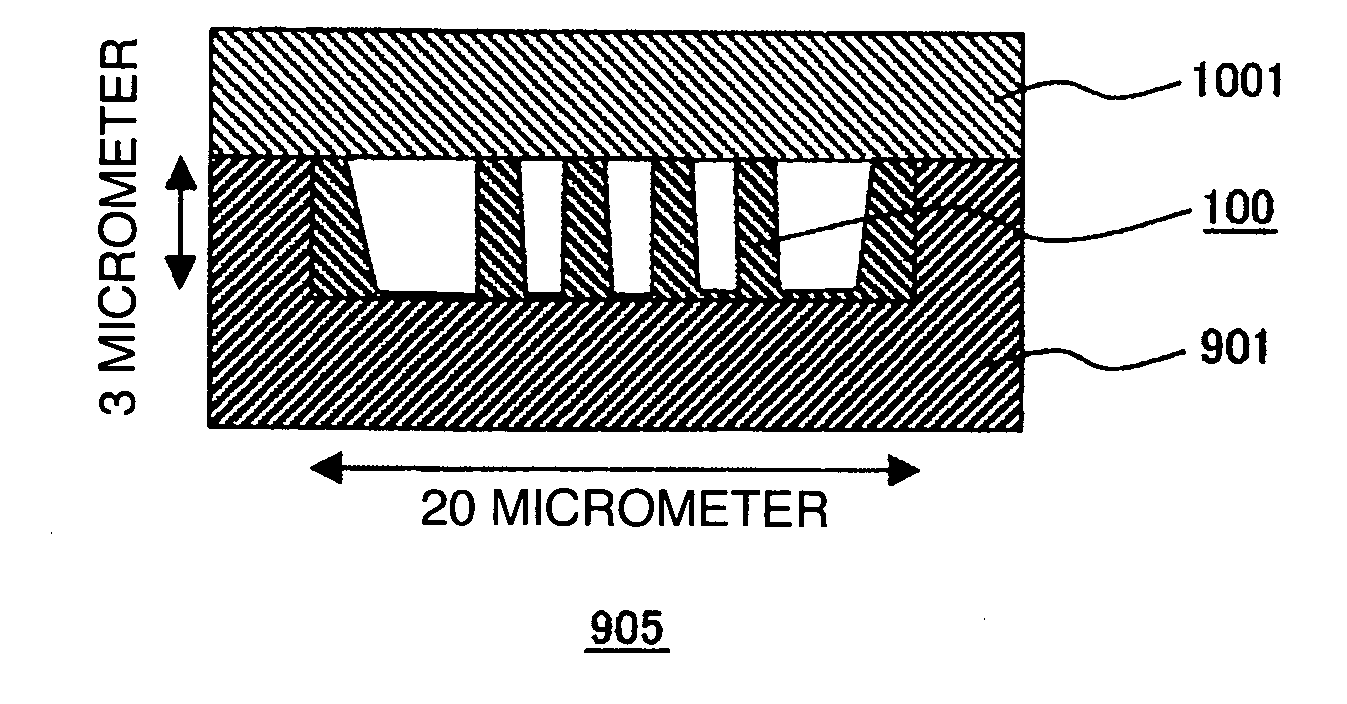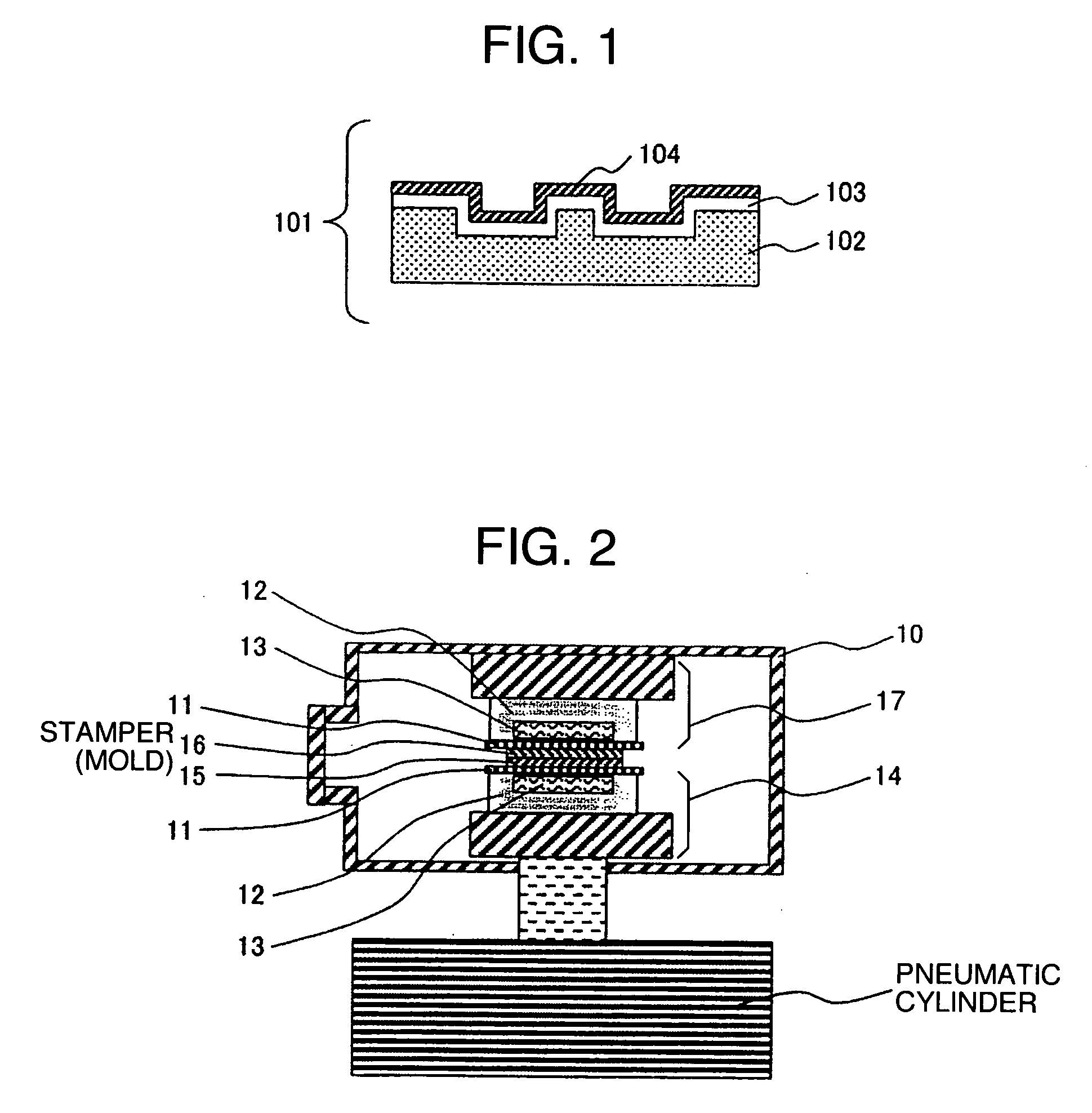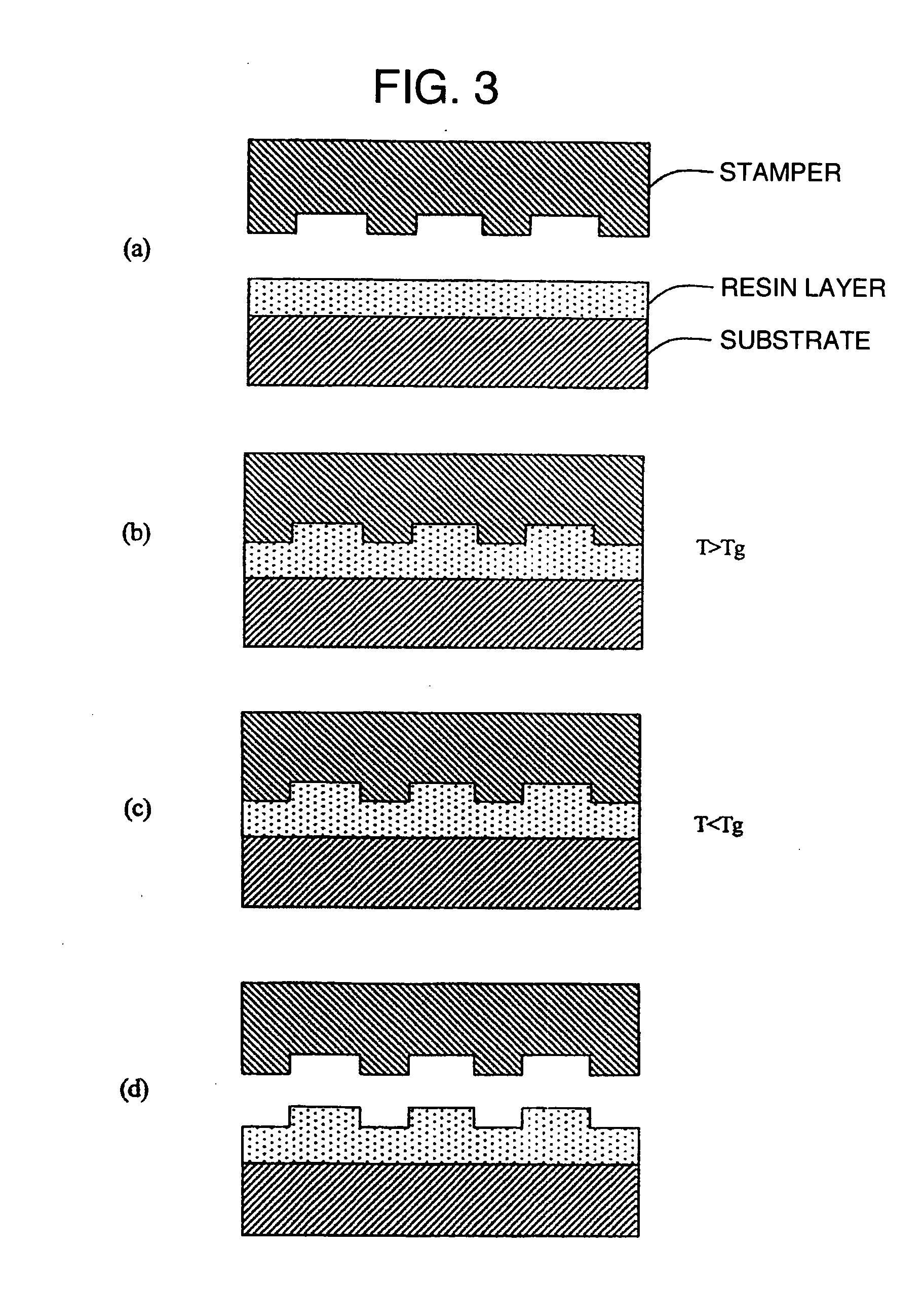Methods of fabricating nano-scale and micro-scale mold for nano-imprint, and mold usage on nano-imprinting equipment
a nano-imprint and nano-micro-scale technology, applied in nanoinformatics, photomechanical equipment, instruments, etc., can solve the problems of mold release, mold release characteristics not improved, plane pressure irregularities not eliminated, etc., and achieve excellent nano-imprinting
- Summary
- Abstract
- Description
- Claims
- Application Information
AI Technical Summary
Benefits of technology
Problems solved by technology
Method used
Image
Examples
example 1
[0093] The characteristic of the surface oxide-film of a Ni mold, which is one of the embodiments of the invention, will be described using FIG. 4 and FIG. 5. In the Ni mold, just before applying a release agent, an oxide film formed by natural oxidation or an oxide film formed by an oxidation treatment, the oxide film being present in the surface, is treated with acid cleaning. In the case where a hydrochloric acid is used as the acid-cleaning chemical, a solution of 0.5-10% by weight concentration is preferable, and a solution of 1-5% by weight concentration is preferable in particular. In the case where a sulfuric acid is used as the acid-cleaning chemical, a solution of 0.5-3% by weight concentration is preferable, and a solution of 0.5-2% by weight concentration is preferable in particular. Preferably, the temperature for the acid cleaning is 20-27° C., and the acid-cleaning time is 20-50 sec. Because these conditions vary depending on the quality of materials of the mold to be...
example 2
[0101] The force required for the release between the mold and the transferred substrate, which is one of the embodiments of the invention, will be described using FIGS. 7 and 8. The mold was produced using the same method as that of the embodiment 1, and the force required for the mold-release of the mold and the substrate was measured with a tensile test machine. FIG. 7 shows the force required during the mold release against the Ni-oxide film thickness in the mold surface. It was found that as the thickness of a Ni-oxide film becomes thinner, it can be released with a lower force. FIG. 8 shows the force required during the mold release against the sum of the thickness of the Ni-oxide film in the mold surface, and the thickness of the release agent. The data of FIG. 7 and FIG. 8 were obtained through observations by TEM, and the measurements by the tensile test machine. It turned out that as the sum of the thickness of the Ni-oxide film and the thickness of a mold-release agent be...
example 3
[0103] The invention is applied to a mold used for biochip preparation. FIG. 9 is a schematic view of a biochip 900. The biochip 900 has a structure wherein a passage 902 with a depth of 3 um and a width of 20 um is formed in a glass substrate 901, and a sample containing DNA (deoxyribonucleic acid), blood, protein, or the like is introduced from a lead-in hole 903, and flown through the passage 902, and then flown to a discharge orifice 904. A molecule filter 905 is installed in the passage 902. A protrusion assembly 100 with a diameter of 250 nm to 300 nm and a height of 3 um is formed in the molecule filter 905.
[0104]FIG. 10 is a cross-sectional bird's-eye view around a portion in which the molecule filter 905 is formed. The passage 902 is formed in the substrate 901, and the protrusion assembly 100 is formed in part of the passage 902. The substrate 901 is covered with an upper substrate 1001, and the sample will move inside the passage 902. For ex...
PUM
| Property | Measurement | Unit |
|---|---|---|
| thickness | aaaaa | aaaaa |
| contact angle | aaaaa | aaaaa |
| thickness | aaaaa | aaaaa |
Abstract
Description
Claims
Application Information
 Login to View More
Login to View More - R&D
- Intellectual Property
- Life Sciences
- Materials
- Tech Scout
- Unparalleled Data Quality
- Higher Quality Content
- 60% Fewer Hallucinations
Browse by: Latest US Patents, China's latest patents, Technical Efficacy Thesaurus, Application Domain, Technology Topic, Popular Technical Reports.
© 2025 PatSnap. All rights reserved.Legal|Privacy policy|Modern Slavery Act Transparency Statement|Sitemap|About US| Contact US: help@patsnap.com



